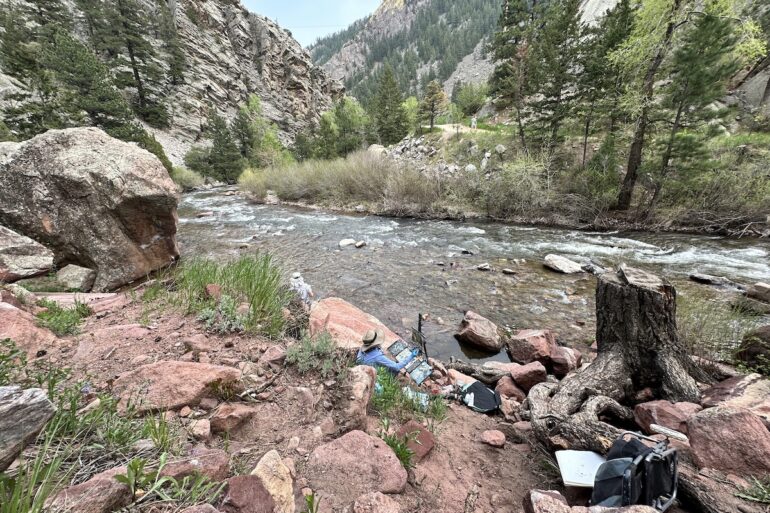
This post is also available in:

The second stop on this incredible adventure at the Plein Air Convention and Expo took PACERS to Eldorado Canyon State Park: a hidden treasure among the towering sandstone cliffs that are interspersed to the artists’ eye by the perspective trees whose silhouettes cadence the mountain’s hard edges.
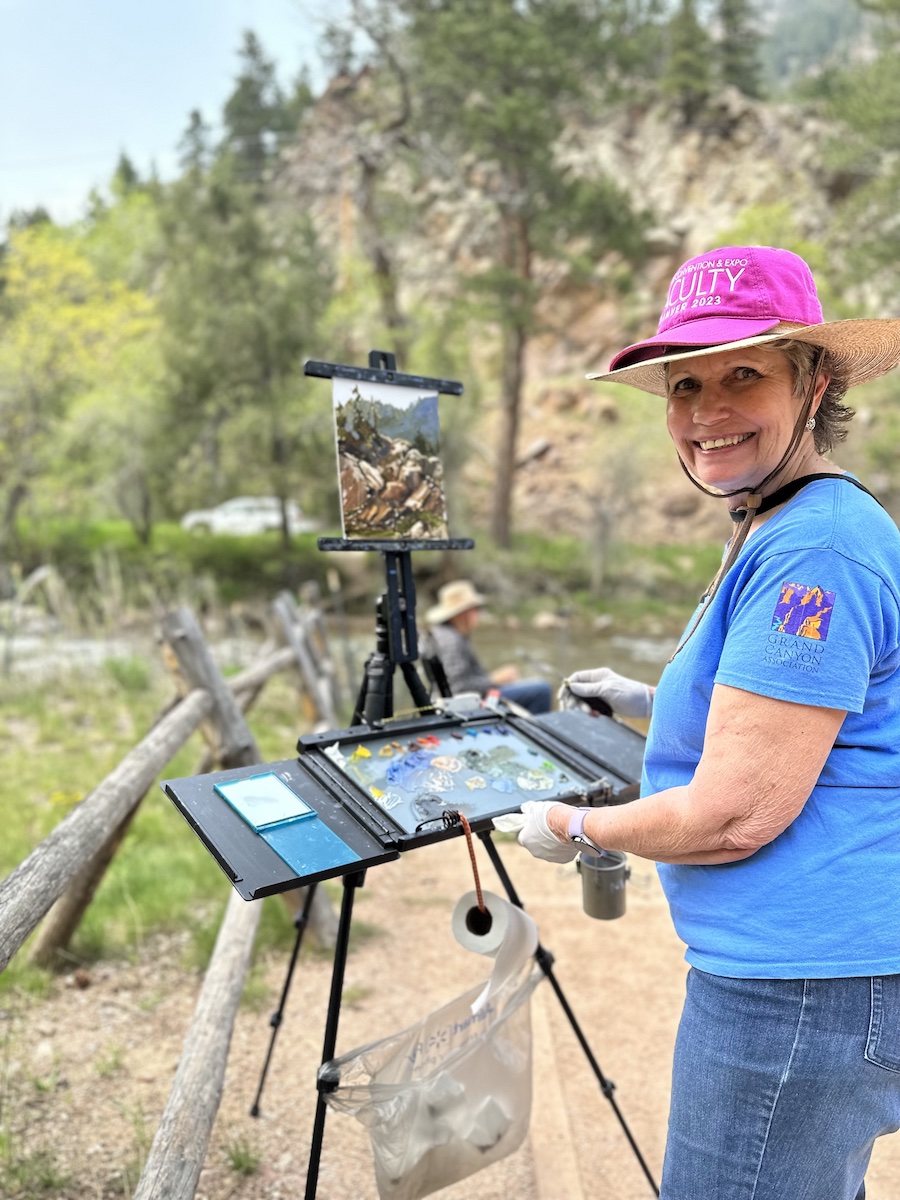
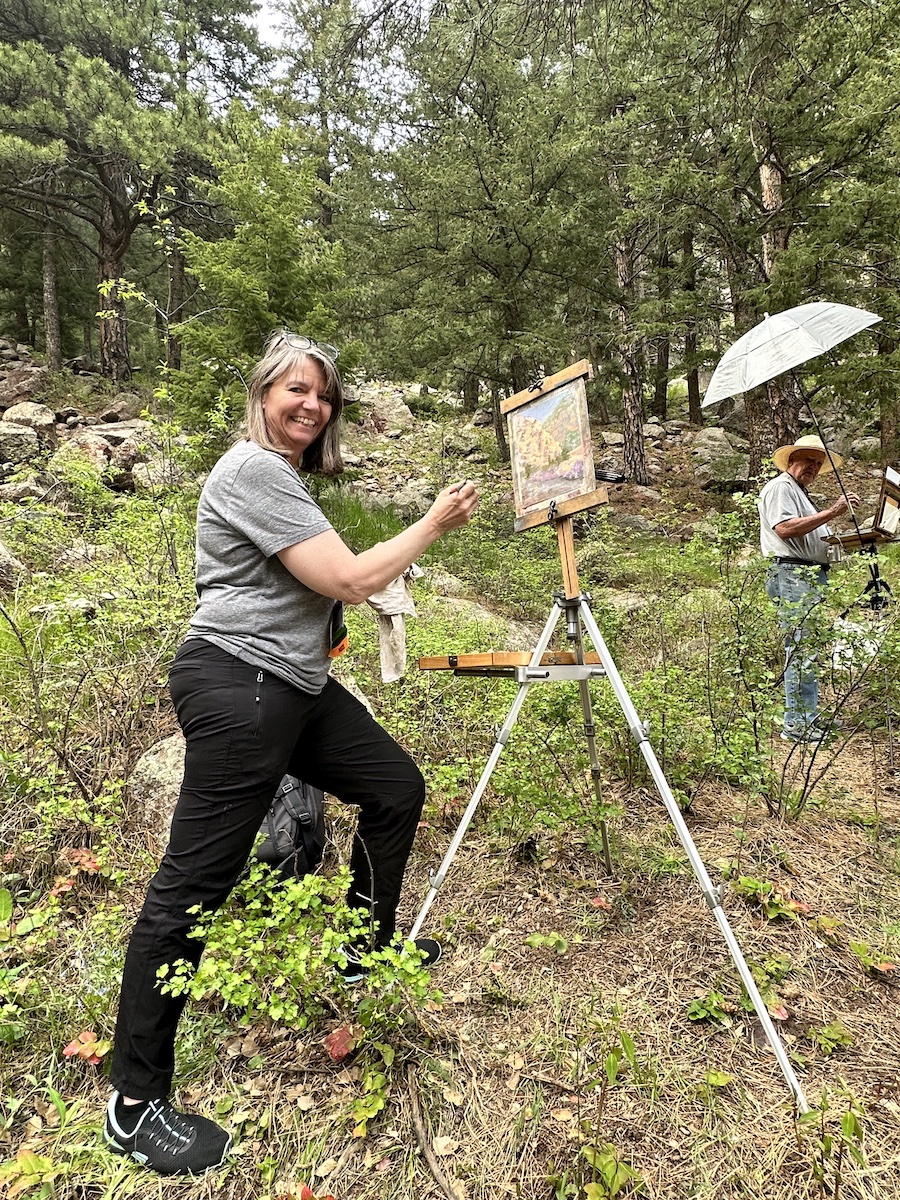
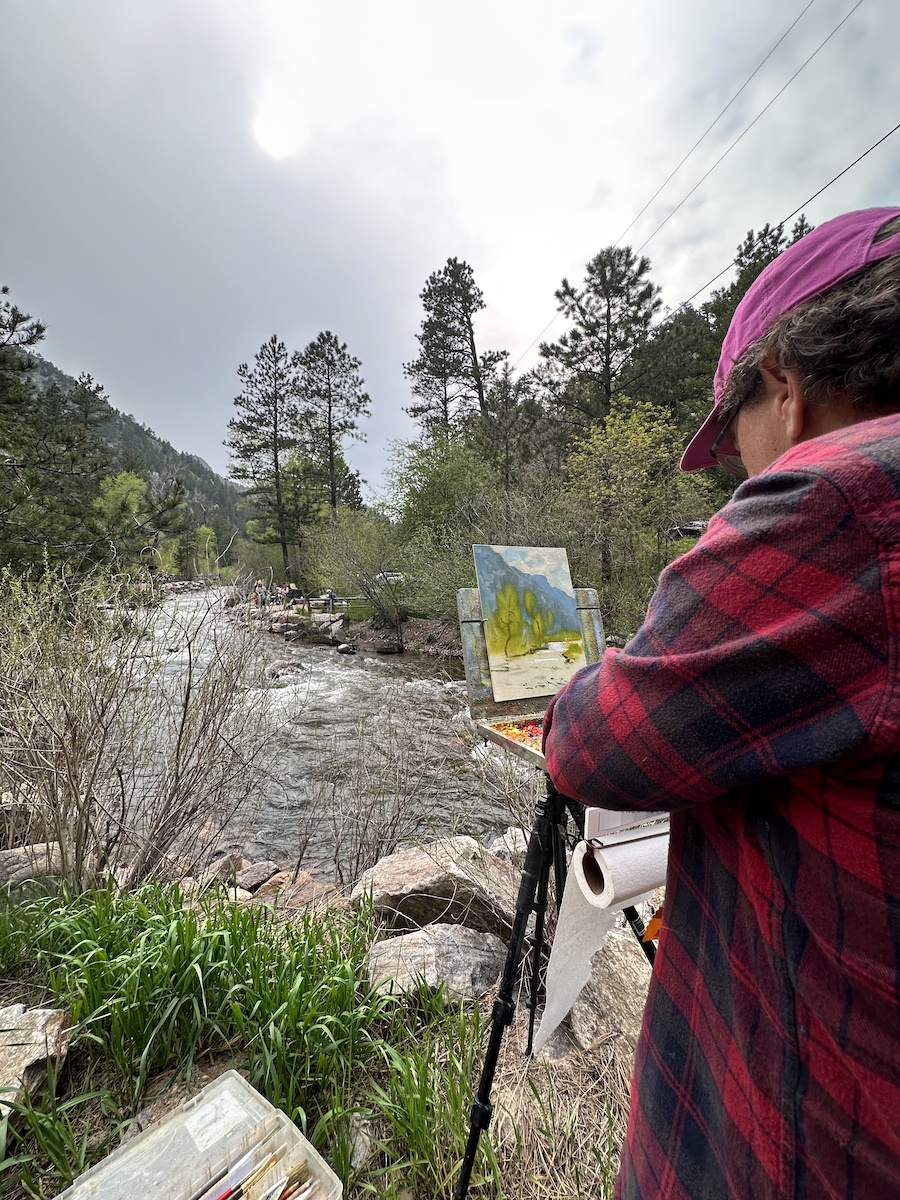
Trees were the main theme covered in most of the daily demonstration sessions, and they are artist Steve Curry’s favorite subject. Curry maintains that there are a thousand ways to approach the compositional realization of trees. In his approach, based on the initial use of darker values, he emphasizes the importance of the negative spaces he works with while maintaining a lighter color palette in the realization of the sky.
The approach to painting from negative spaces was also shown in Lon Brauer’s composition in which the compositional subject – beautiful chickens- took shape from working with negative spaces.
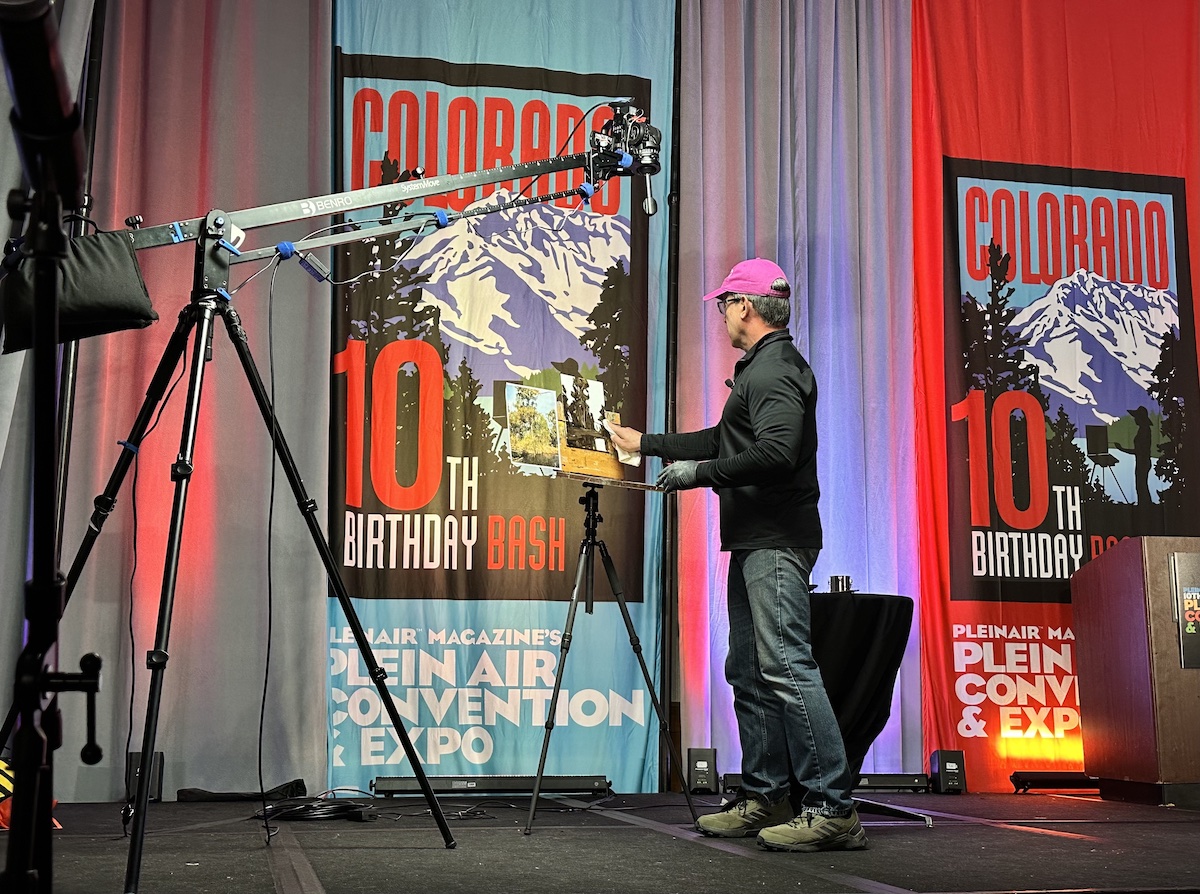
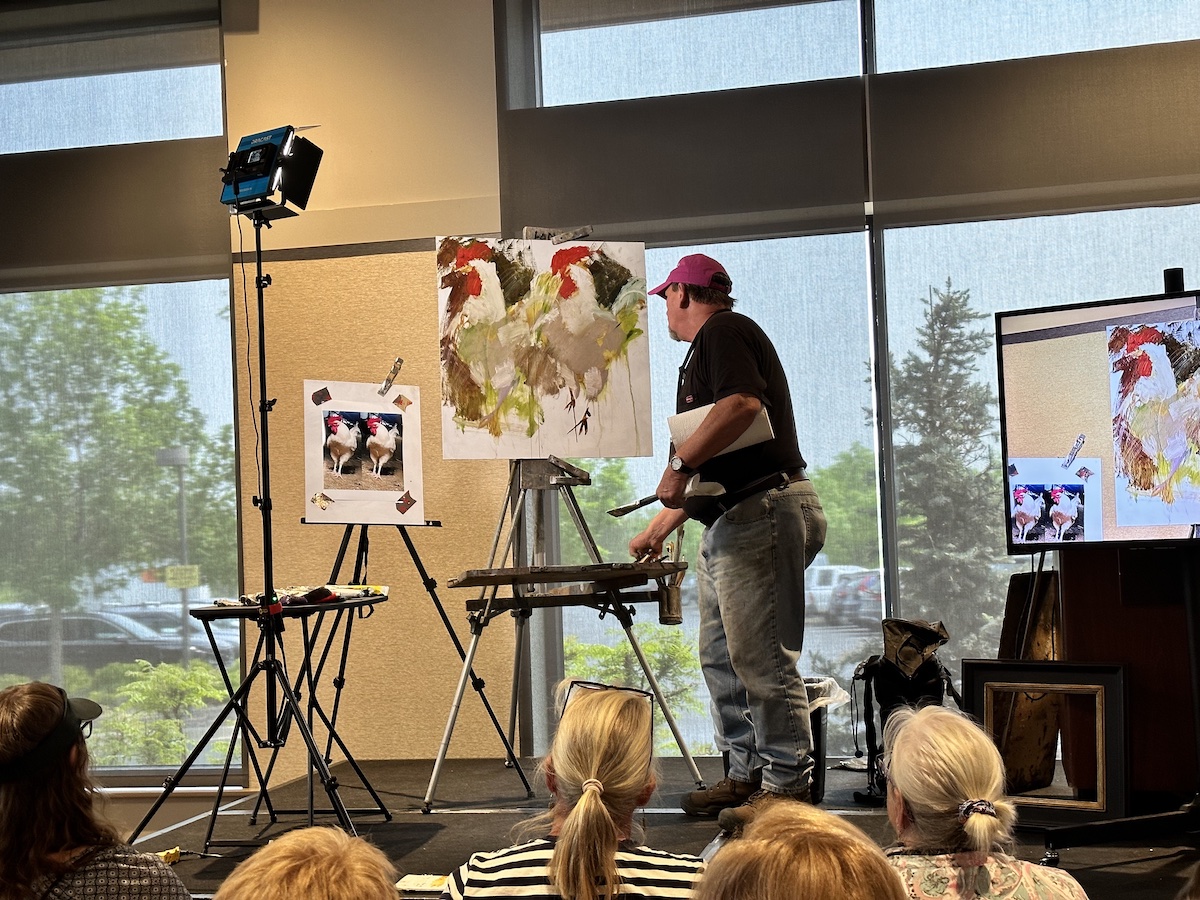
Of a different opinion is Terri Ford who, in her pastel composition, paints the trees by emphasizing their silhouette with that harmonizes the contrast between the jagged edges of the mountains and the soft edges of the foliage.
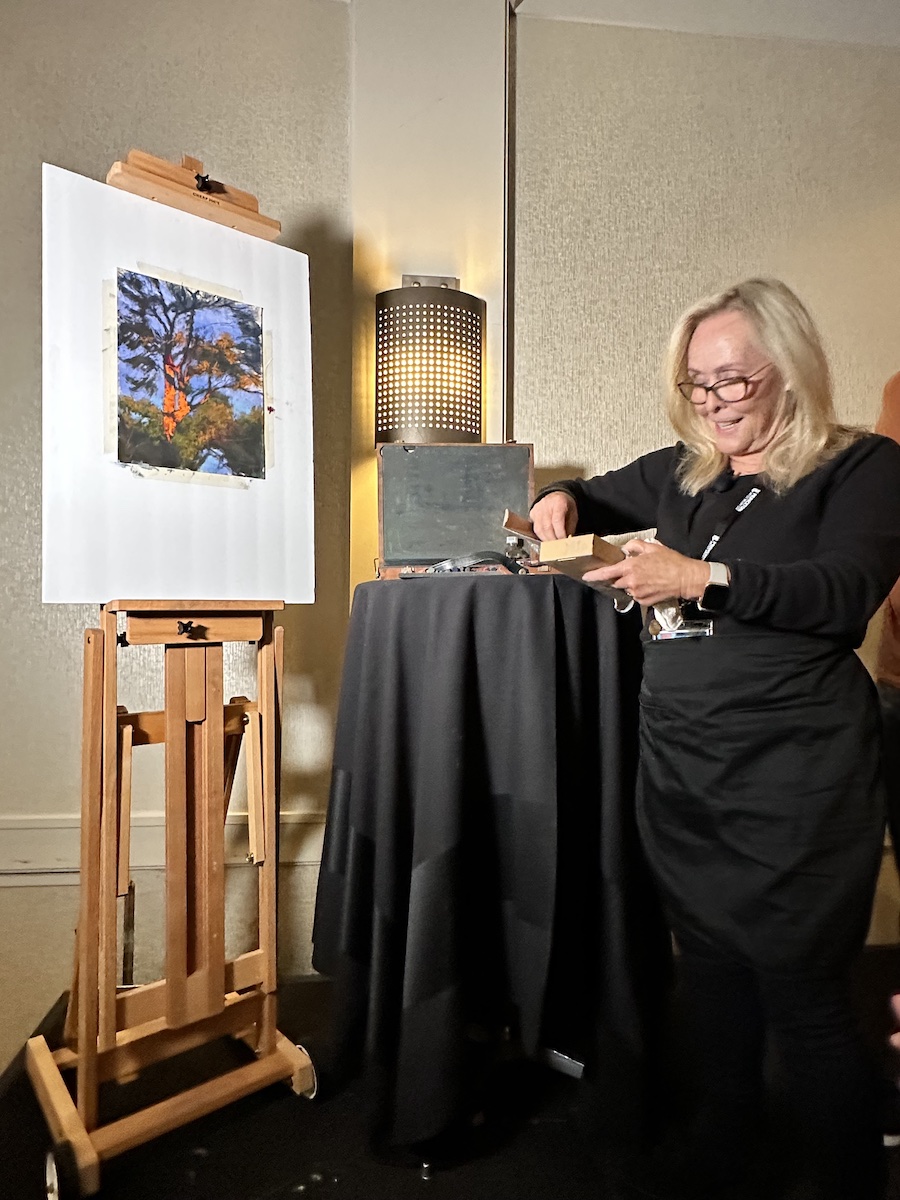
For watercolorist Shuang-Li, trees constitute ornamentation, in this case of a lake landscape. In the composition made from a light underpainting with which she established forms by focusing on basic tonal and color values, she later refined the values based on perspective. Of a different approach, but of the same opinion, the trees painted by Lori Mcnee emphasize compositional harmony. Supported by Jeff Olson’s technical explanations, she made a composition with a limited palette of water mixable oils that offer her the immediacy of color.
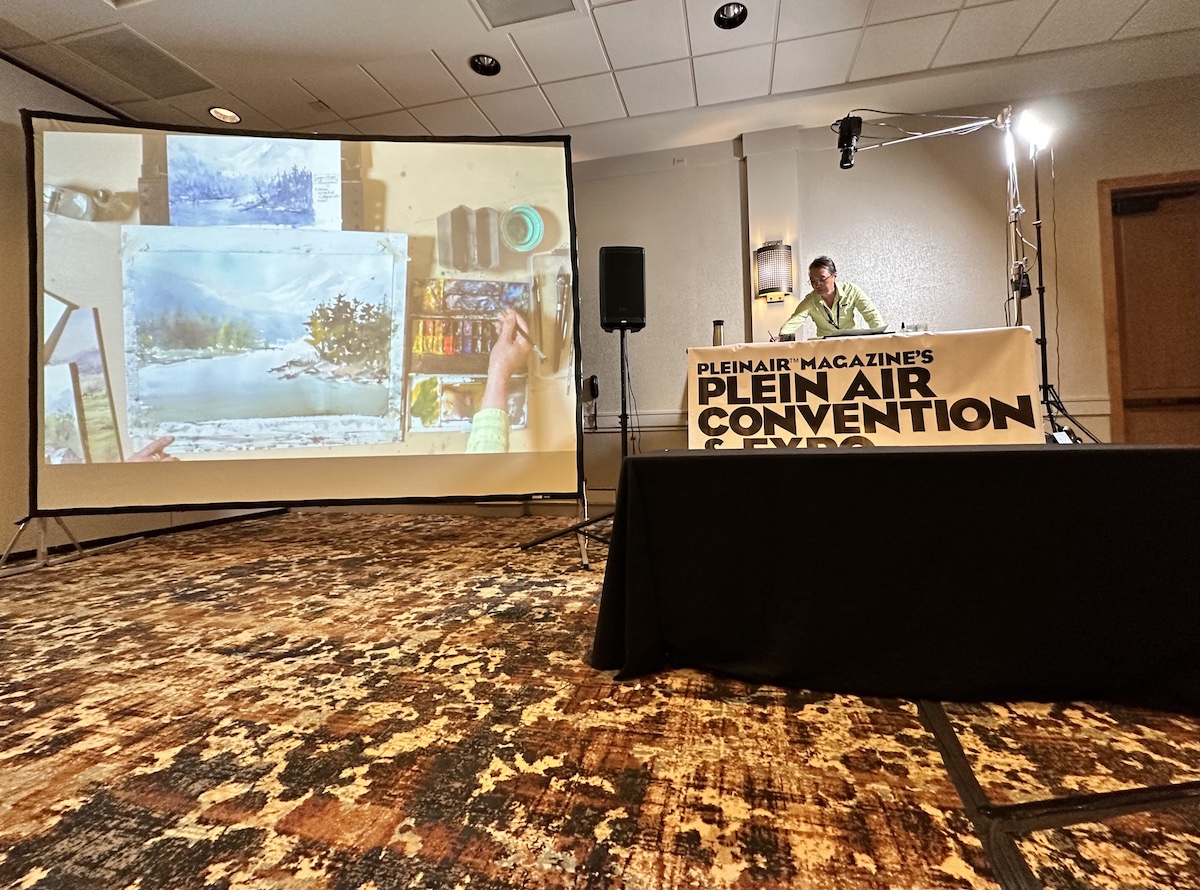
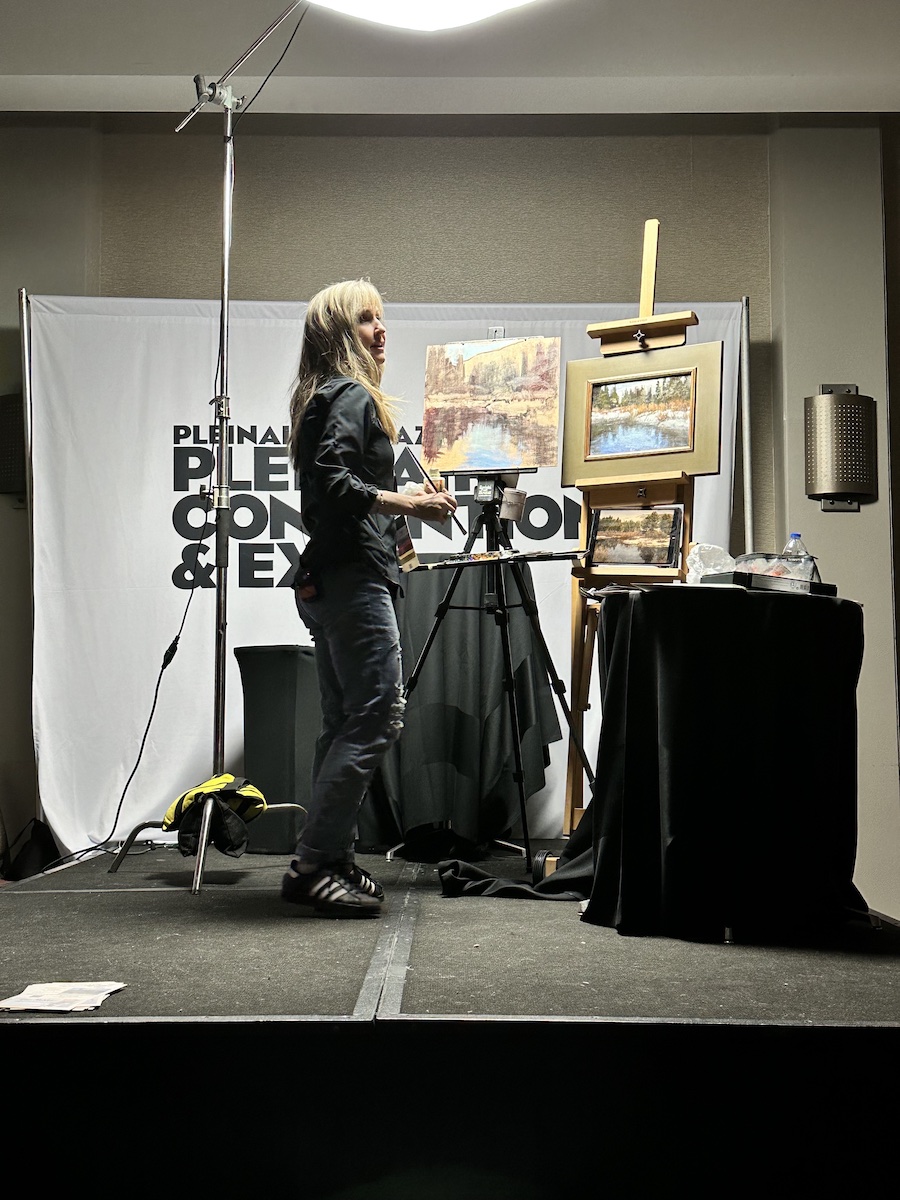
There were several and varied daily demonstrations highlighting the importance of chroma, hue and values.
Artist Cinthya Rosen, with a teaching background behind her, demonstrated the meaning of “breaking the colors” a mantra she demonstrated through making the same subject in realistic and abstract ways.
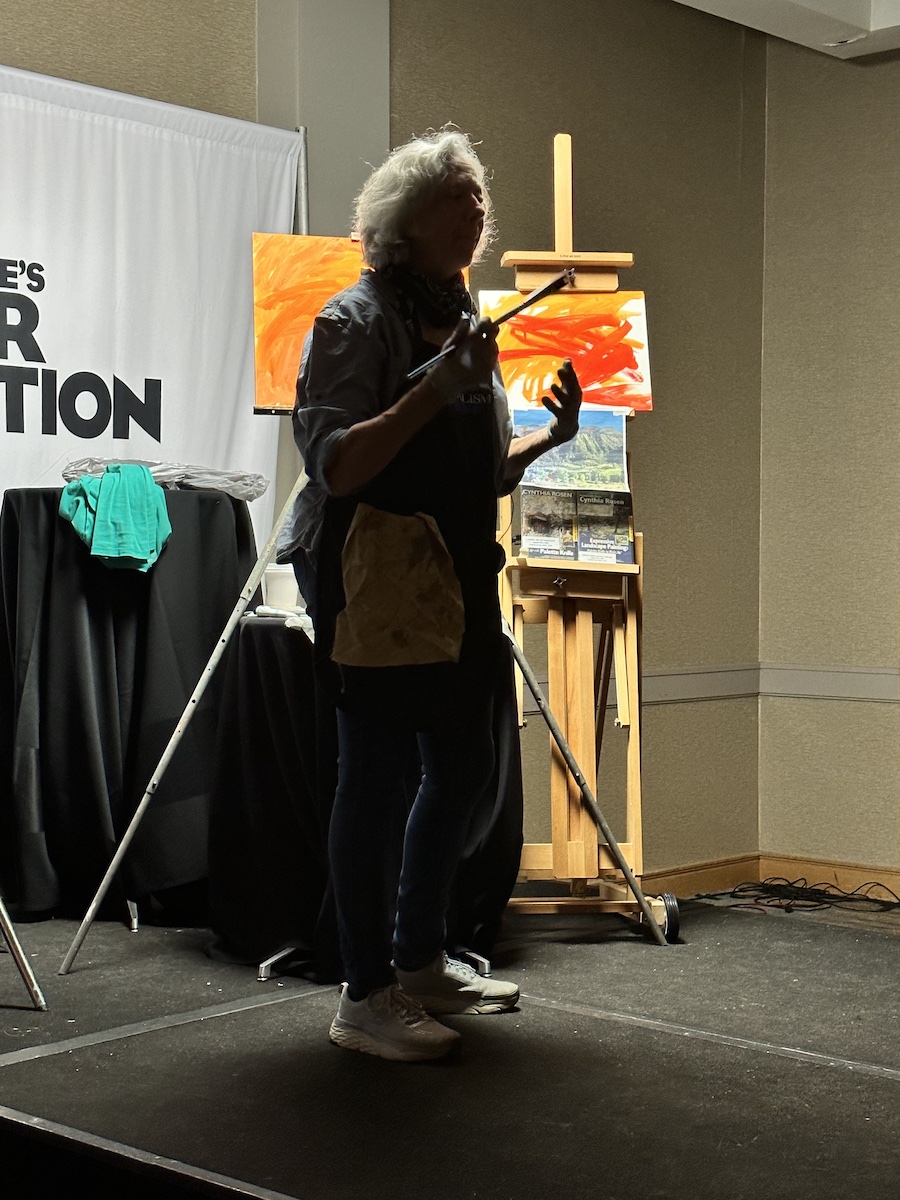
Jane Hunt made a conceptual demonstration reviewing all the various factors involved in making a proper compositional approach based on the concepts of value, composition and color, a good reminder for all plein-air painting artists.
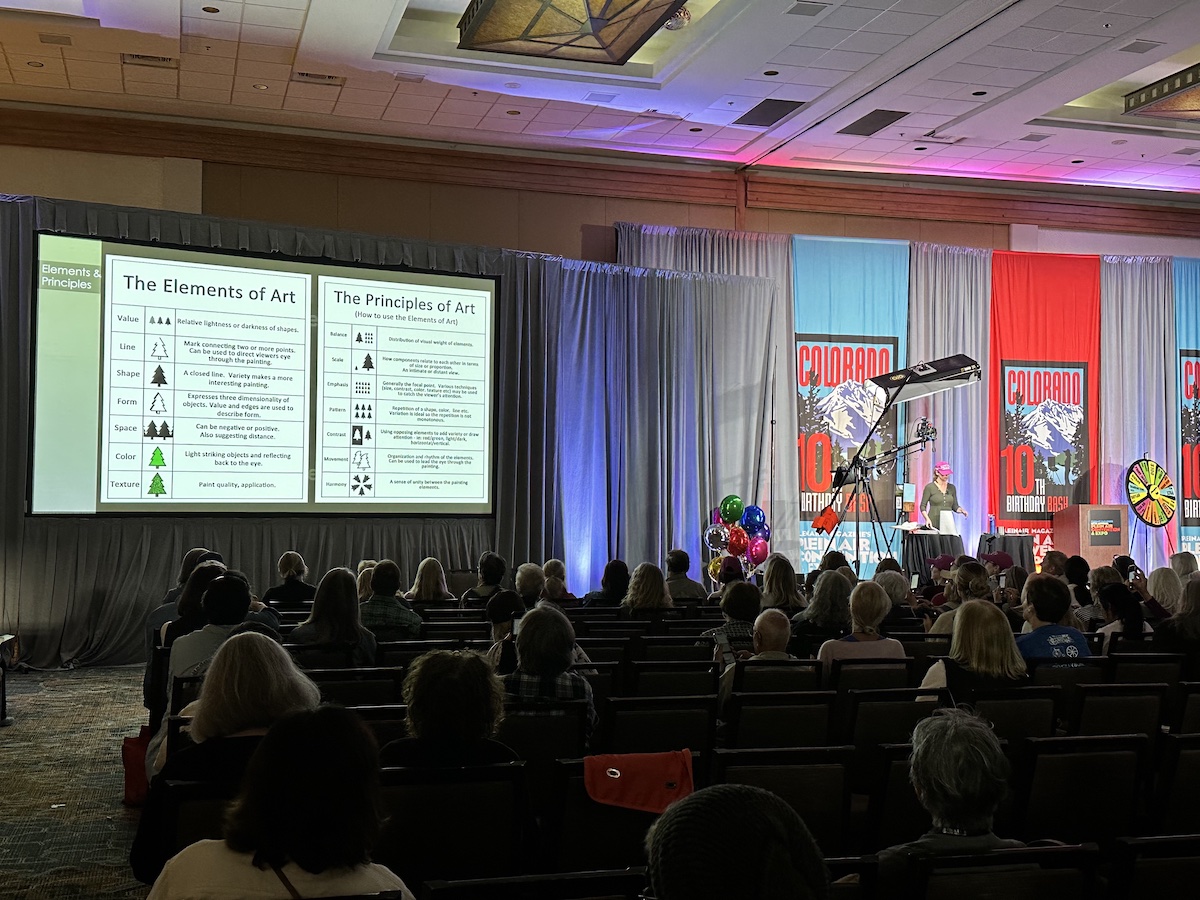
“The beauty of watercolor is that you can adjust it with different layers of colors,” said artist Dan Marshall, who harmoniously connected sky and earth tones taking care not to make straight lines that make the composition untrue.
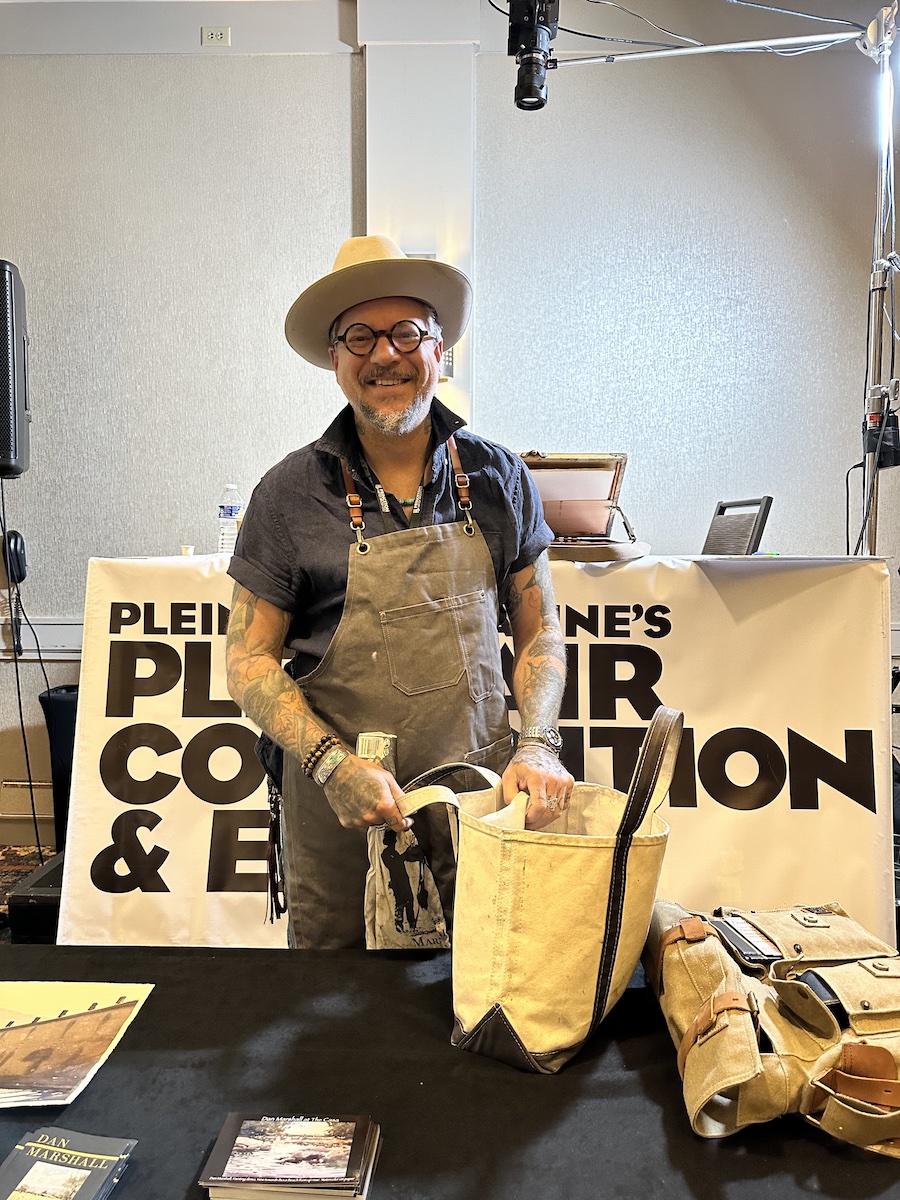
“Feeling free to handle the brush is the essence of plein-air painting,” according to artist Debra Huse, who in oil compassion has emphasized the great contrasts of Colorado, her homeland, determined by the blue sky, large clouds, mountains and trees.
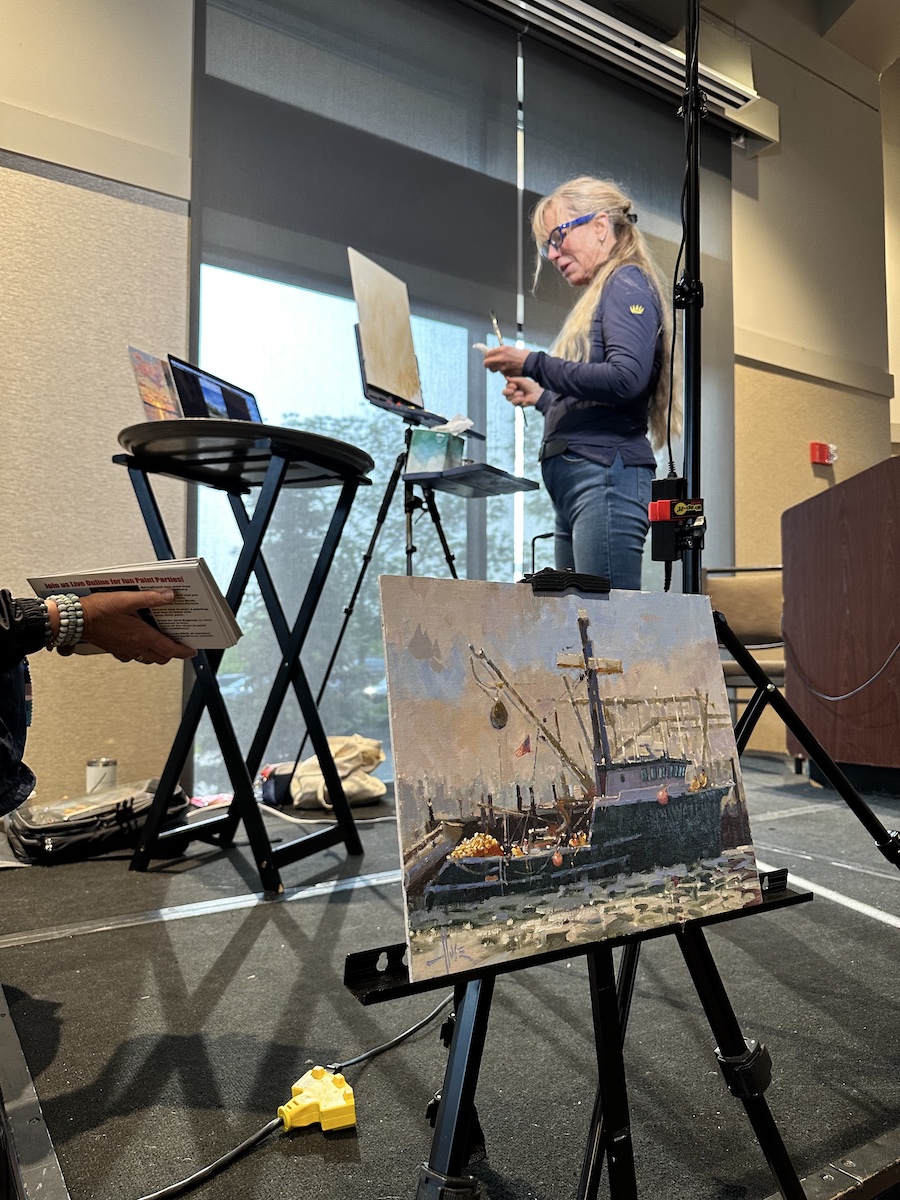
Taking advantage of the beauty of spring and the lush nature of Colorado, pastelist Kim Casebeer created a composition played predominantly on green. In the compositional realization she achieved her own shade of green, built with an overlay of colors spread over a monochromatic underpainting a with which she emphasized the poetry of the composition.
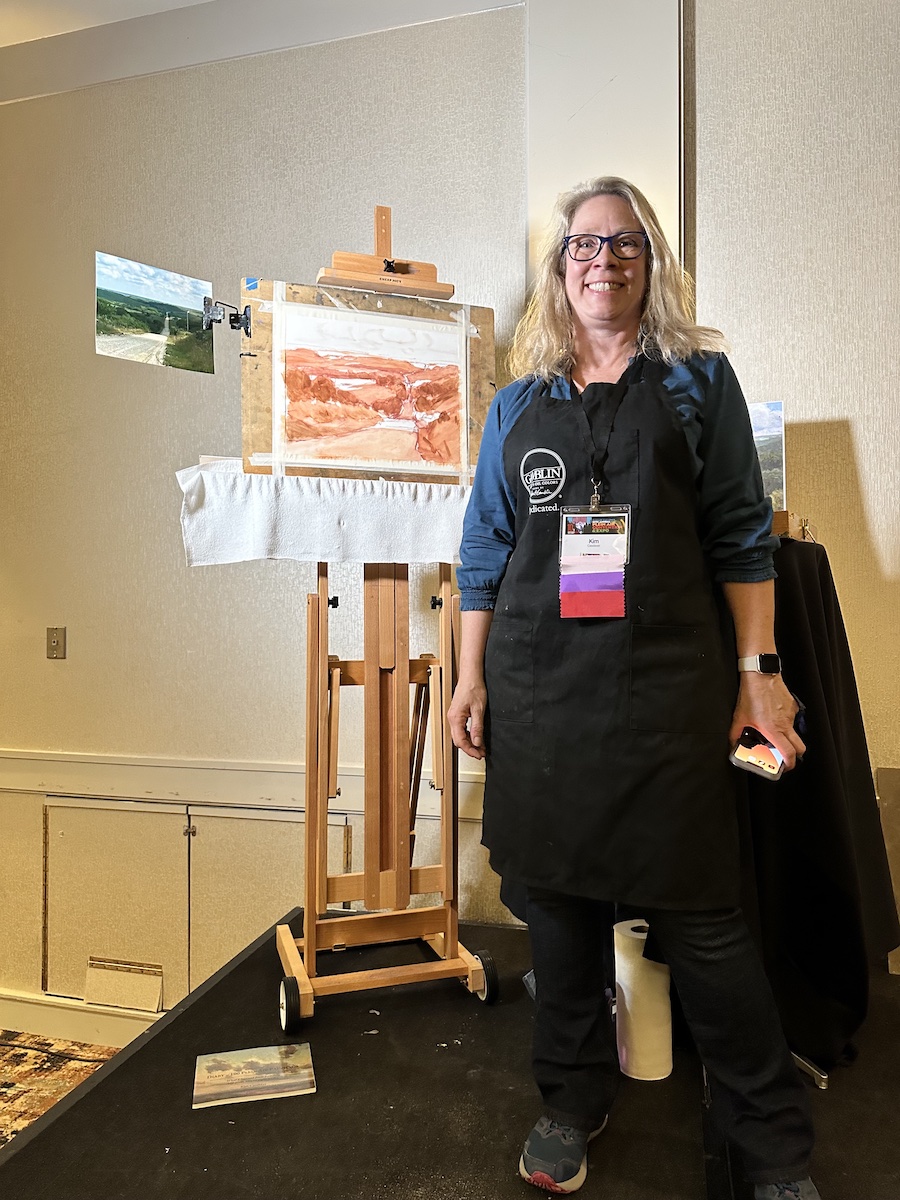
According to artist Nancy Tankersley: “Painting is a matter of observation and innovation too.”
Known for her ability to portray the human figure, she showed the audience how to insert figures into the landscape in an absolutely harmonious way.
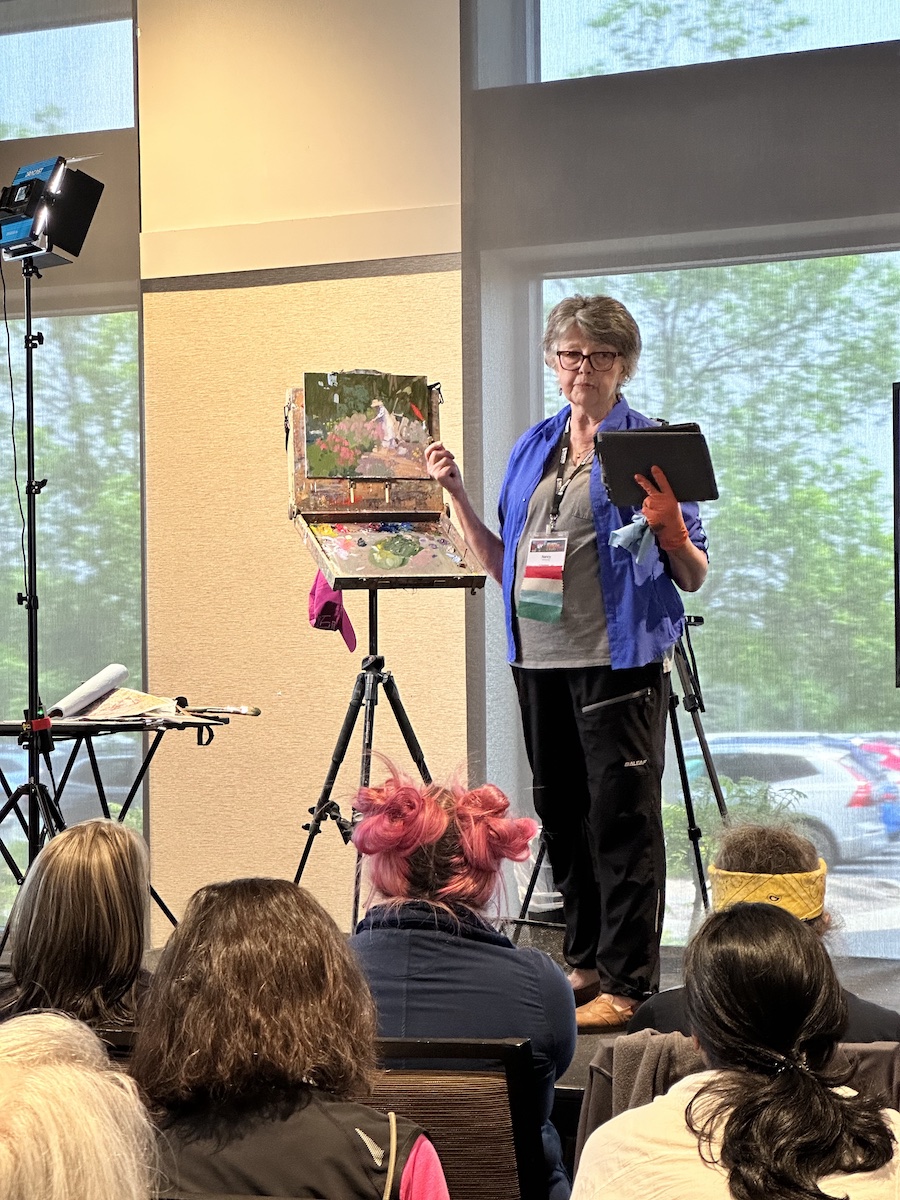
The afternoon session featured some living legends in the American art scene.
The first guest was Pierre Guidetti: a historical face known in the milieu as “Art Supplies Historian,” and originator of the “Go Paint” mantra. Guidetti delivered an interesting historical disquisition with which he highlighted the different French and American concept of plein air, declaring that France is also approaching the American way of conceiving plein air painting. Guidetti, with explanatory slides reviewed the personalities who contributed to making painting in plein air a true artistic movement: from the pre-impressionist Eduard Manet among the founders of le Salon de Refusés, who challenged the canons of French academic painting, to the Ecolé du Barbizon and the great protagonists of both the history of French Impressionism such as: Claude Monet, Sisley, Degas, Berthe Morisot and many others; and the American one with figures such as J.S.Sargent and Edgar Payne. Guidetti also pointed out that the the turning point of plein air painting, was the birth of tube paints and the easel. Elements that radically changed the history of plein air painting.

Silent artist Daniel Sprick made what the old masters call a “Synthetic” landscape by bringing in imposing rocks that provide the atmosphere of a plein air landscape indoors in a studio and which he depicted in his unique and unmistakable way, cadenced by a few words. Daniel Sprick stated that, especially for an artist, it is important to be self-encouraging.
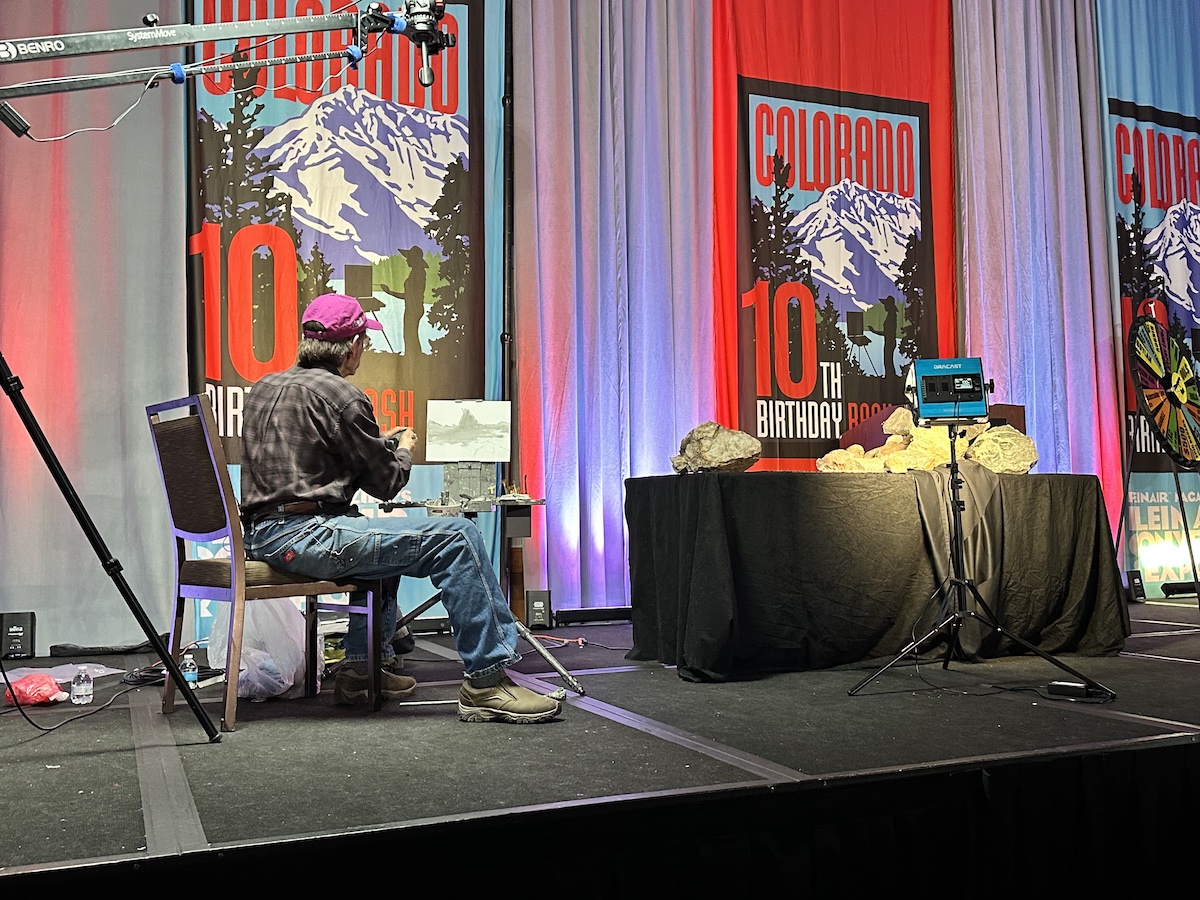
Albert Handle, a living legend in the representation of nature in pastel focused on the importance of “seeing” colors. An element derived from a deep and intimate spirit of observation from which the compositional rhythm emerges.
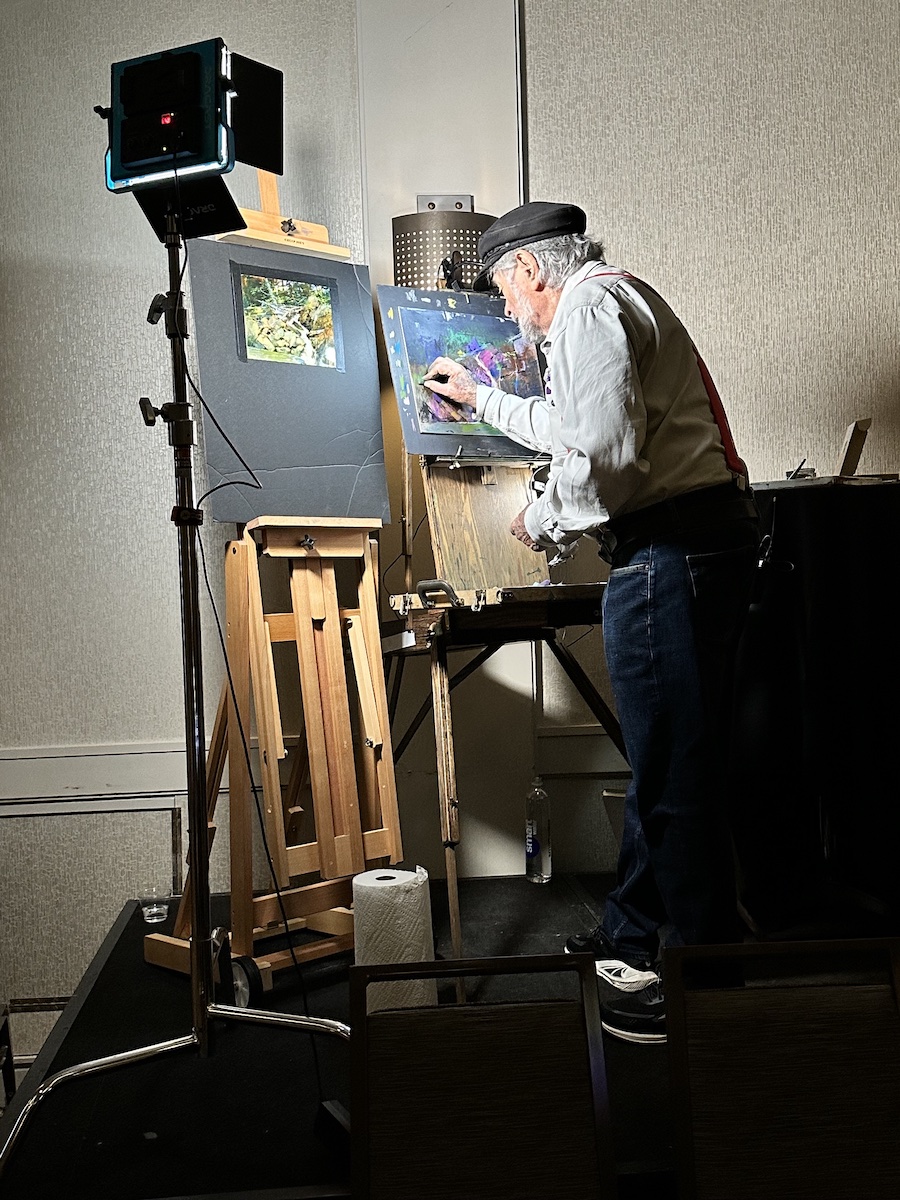
According to Robert Masla, who made a composition from the imprimatura, there is no universal color palette because it varies as the subject to be represented varies, which is unique and unrepeatable.
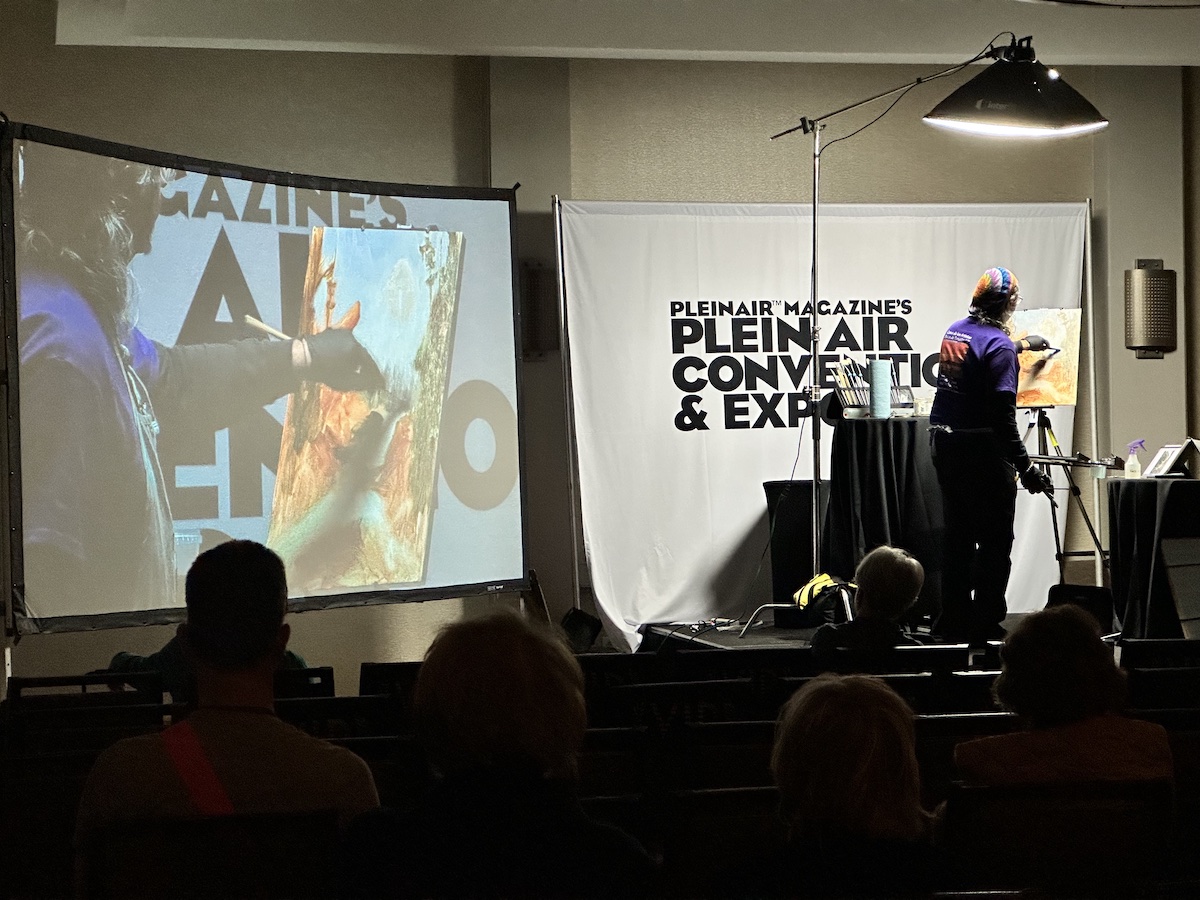
Several were the artists who, sponsored by art brands made interesting demonstrations. Among them Joe Gyurcsak, for Blick Art Materials who captured the essence of the subject starting from the background.
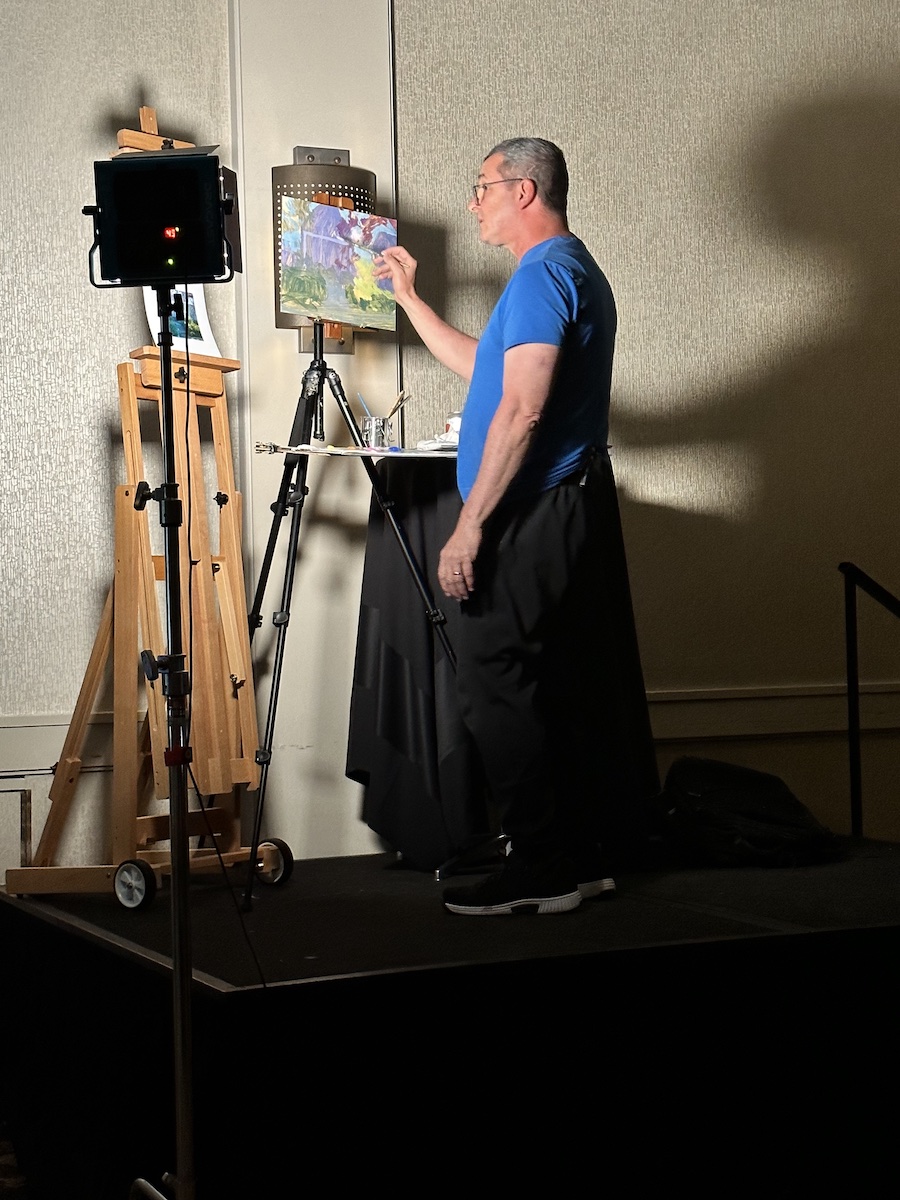
Vladislav Yeliseyev’s unmistakable way of simultaneously working and talking nonstop characterized the session created for Cheap Joe’s Art and Stuff. According to Yeliseyev, from the little accidents along the way come pleasant visual effects that are difficult to replicate.
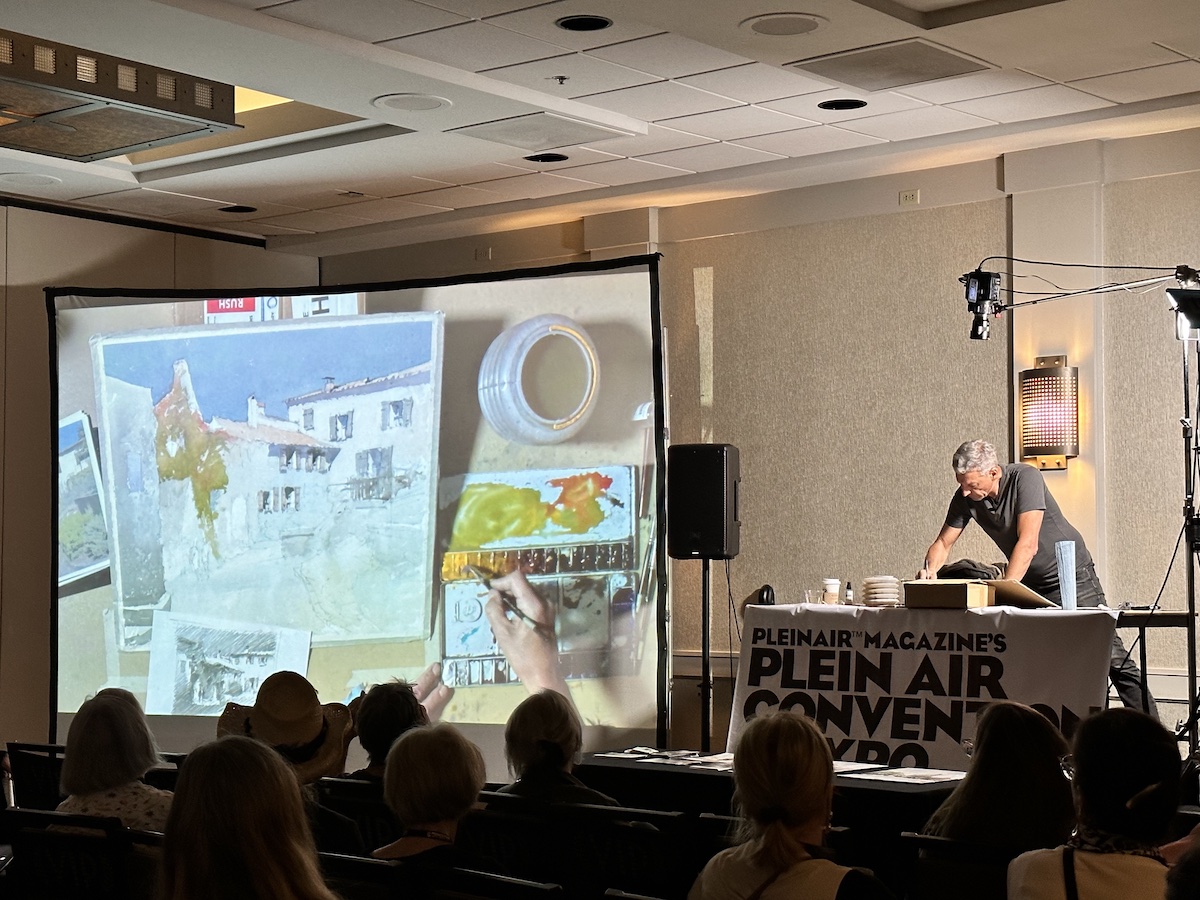
Artist Joe Domeiner in his demonstration for Hahnemühle, on the other hand, showed the steps of papermaking by stating: “Watermarked in a piece of paper is only a piece of paper boundering up.”
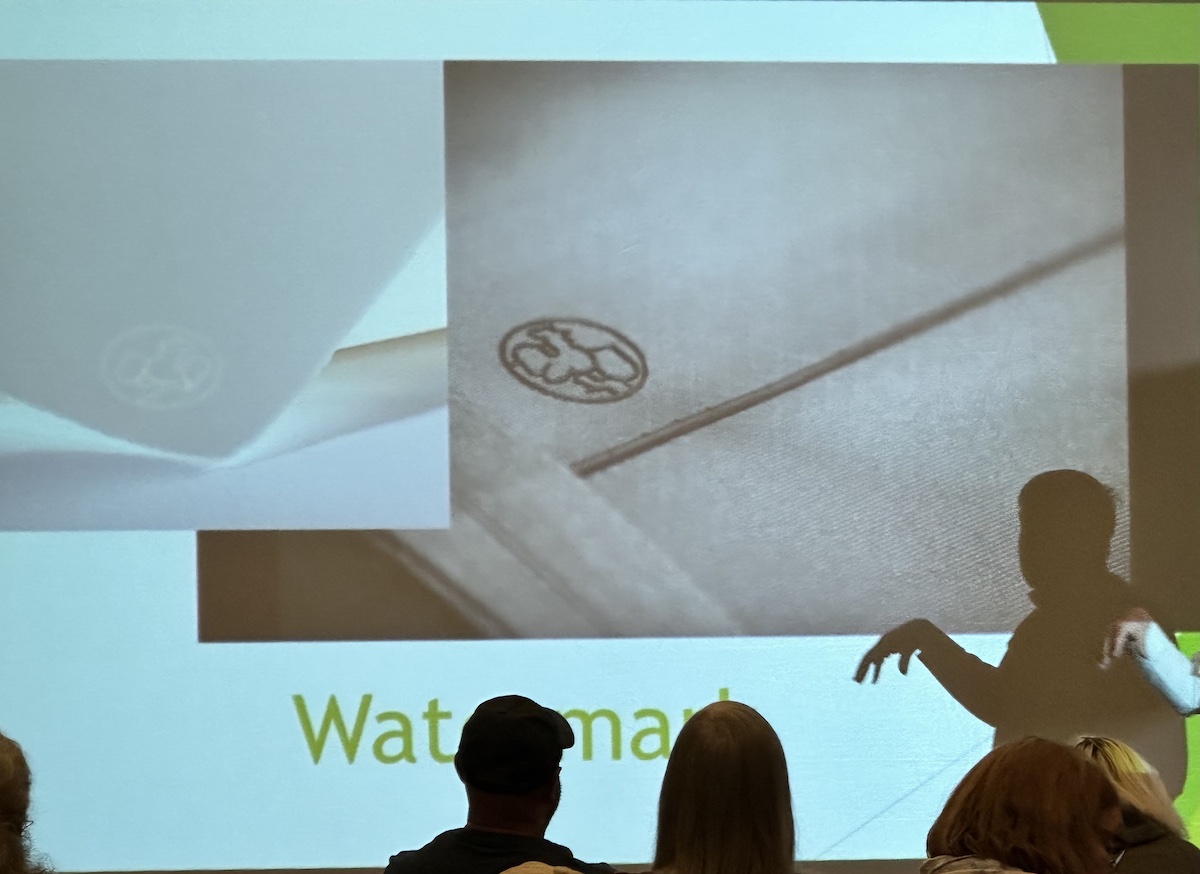
The day ended with the critical session given by Lori Putnam and Stefan Bauman who agree on the importance of light and from the narrative of composition that is ascribed to light anyway.
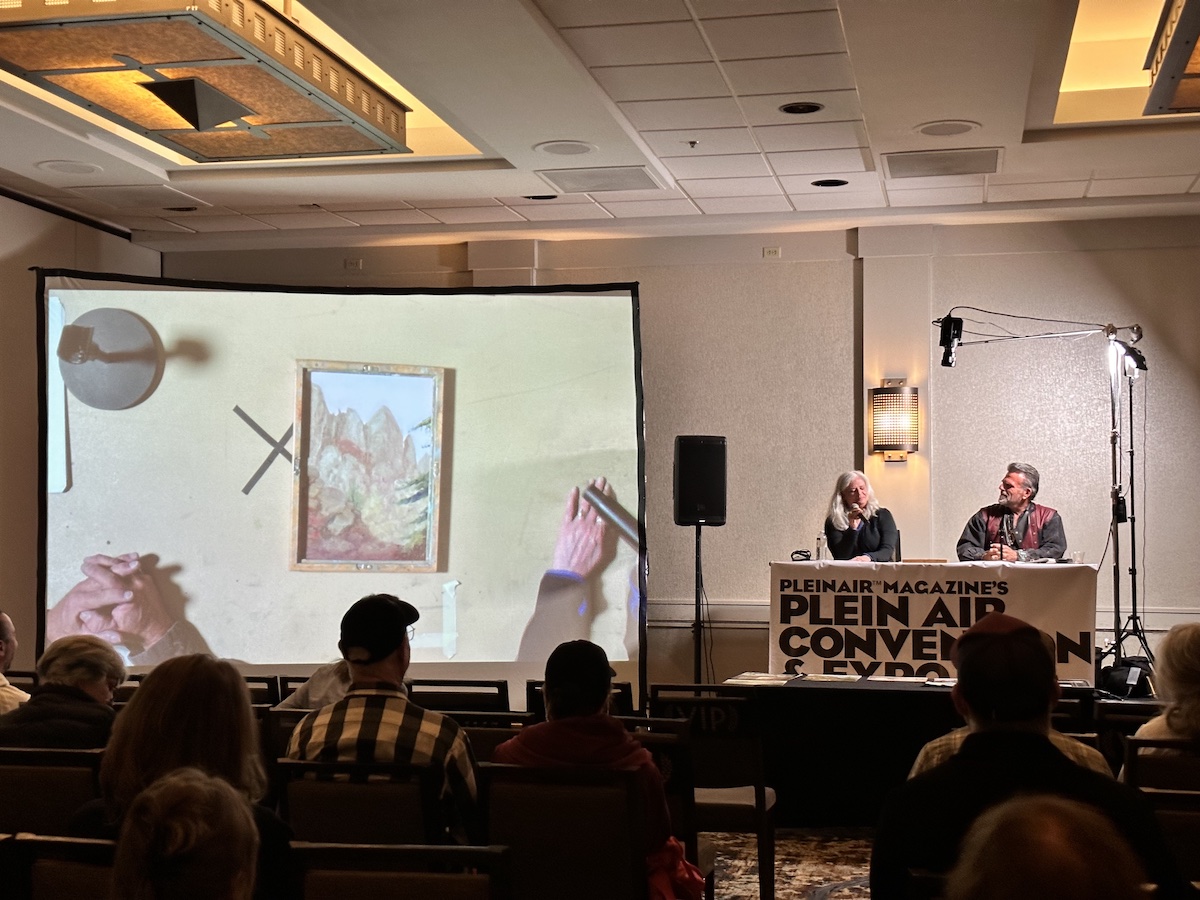
Artist Michele Usibelli’s practical demonstration counts gouache: a medium she decided to use because of the speed of execution that allows her to finish the work without the pauses due to, for example, the use of oil. Usibelli, who has experimented with all mediums, said that her seemingly chaotic work is actually studied and well-organized down to the smallest details in her head. A process that takes her days of preparation before the practice session.
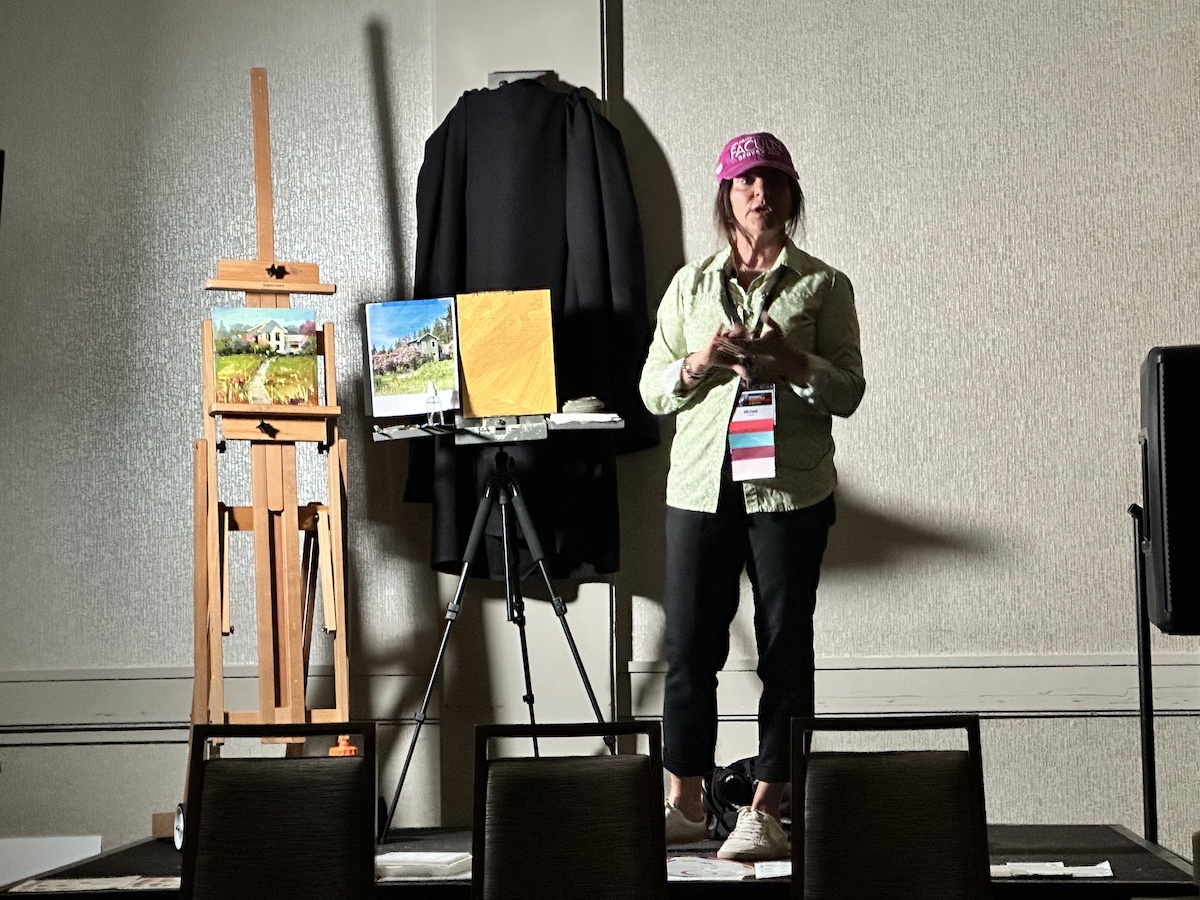
Artist Anna Rose Bain has created a stunning floral arrangement, personally designed to literally “open up” the compositional beauty in the complex harmony of light and color.
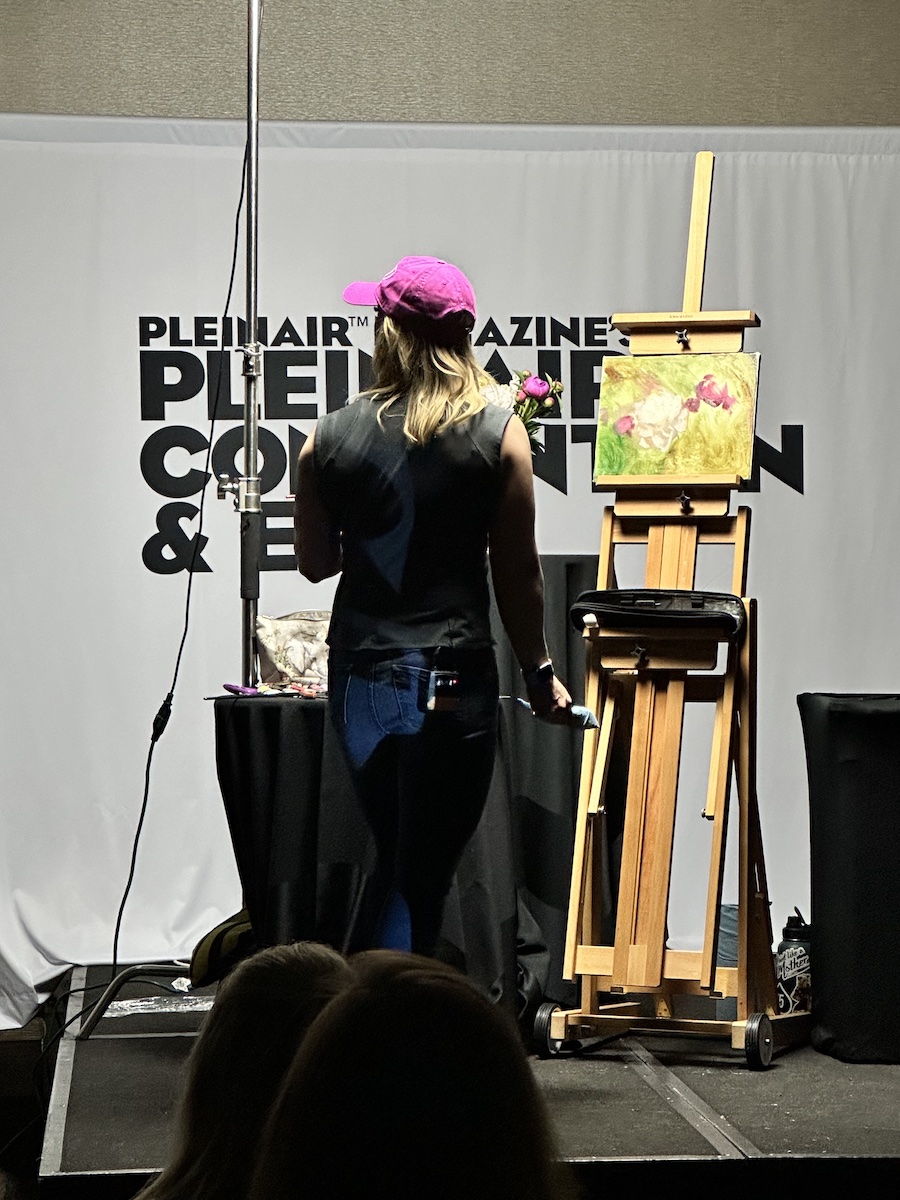
Last artist of the day Zufar Bikbov, made a composition at night highlighting the importance of perspective established through the initial use of the lightest colors.
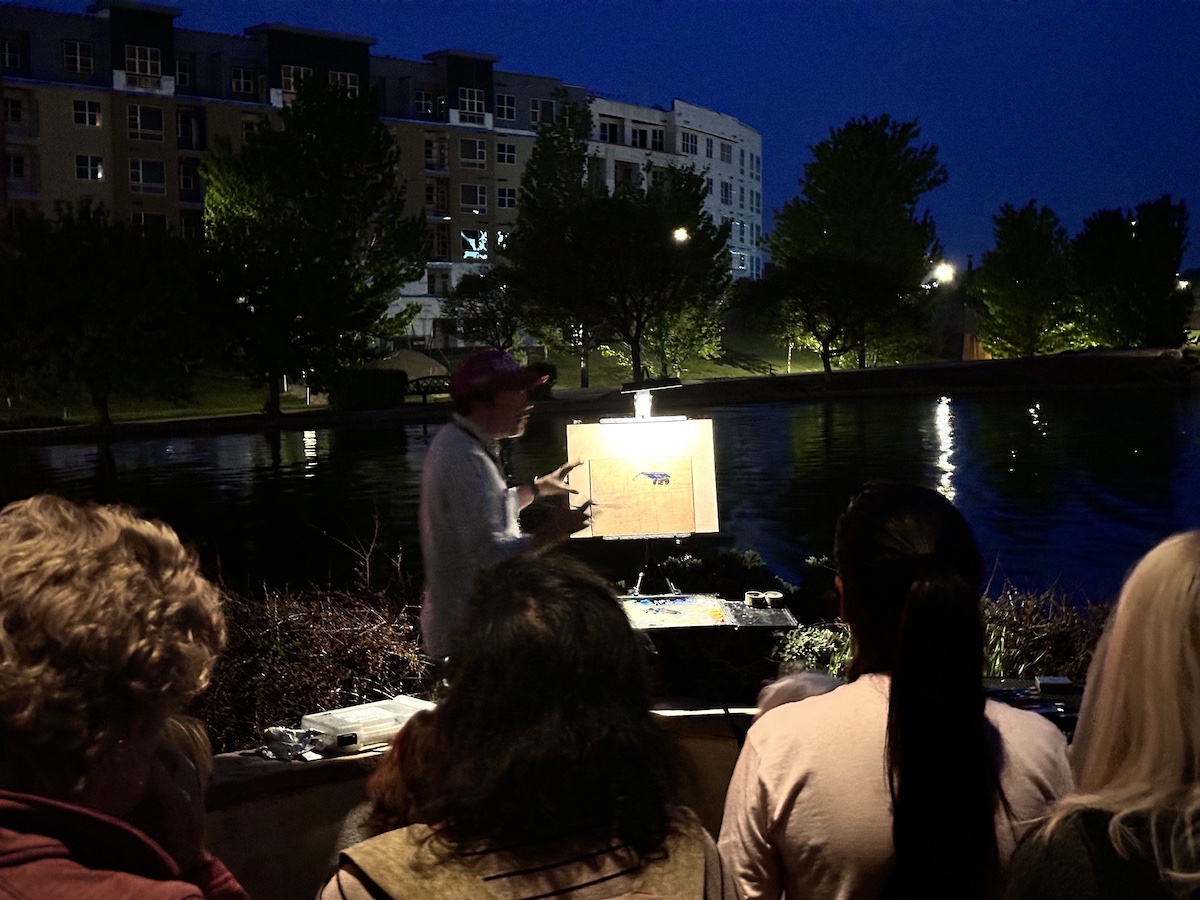
(on the title, a frame from the Eldorado Canyon State Park)
